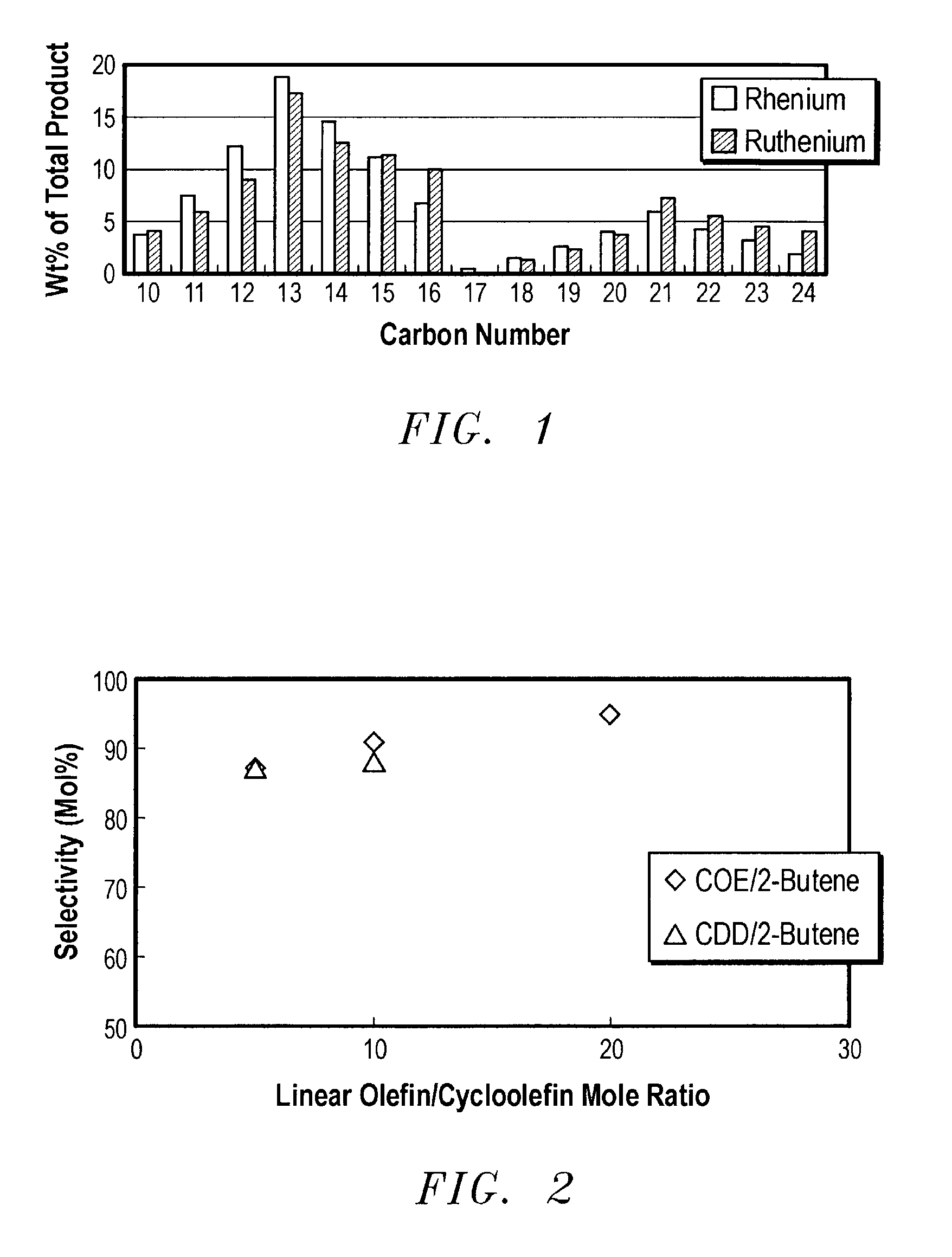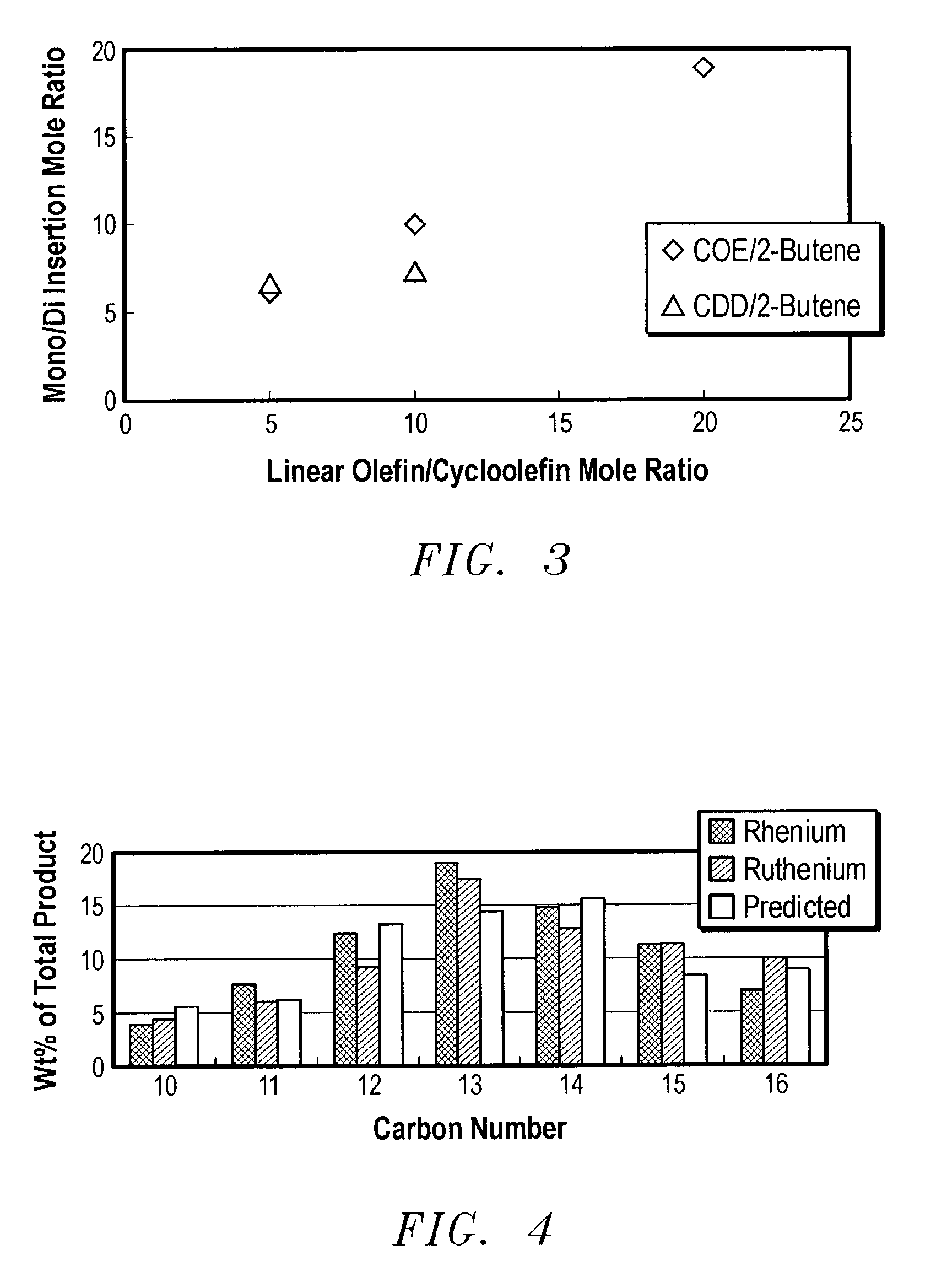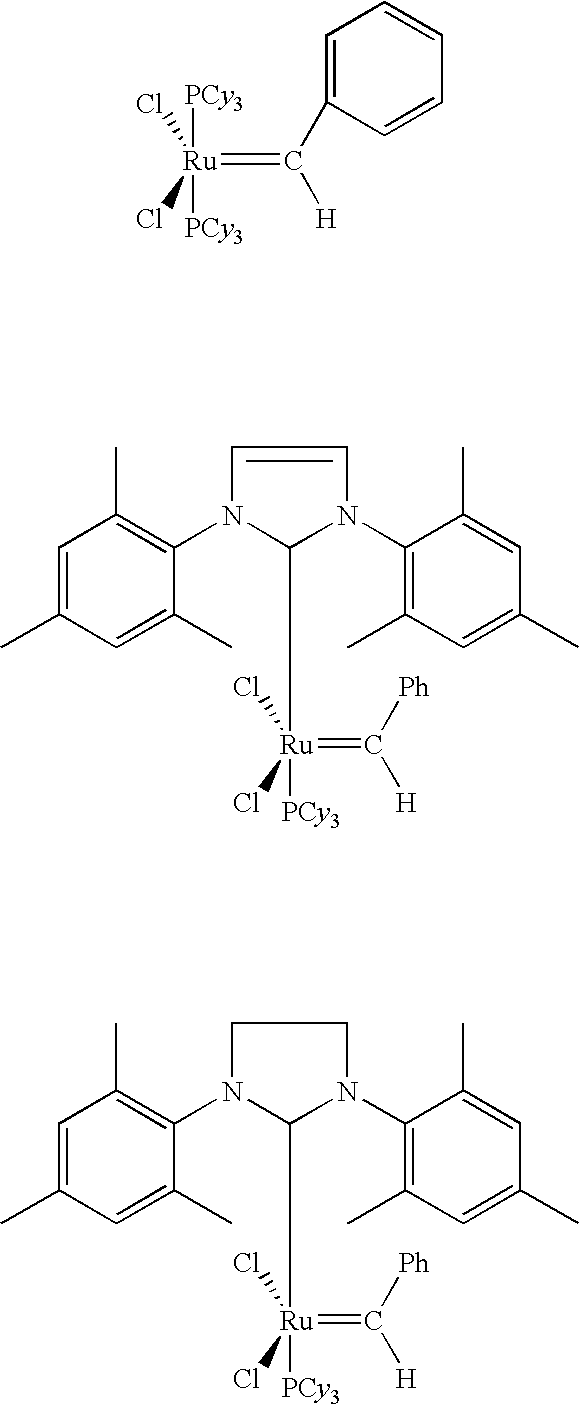Linear and branched olefin production from cyclic olefin feedstocks
- Summary
- Abstract
- Description
- Claims
- Application Information
AI Technical Summary
Benefits of technology
Problems solved by technology
Method used
Image
Examples
example 1
[0046]A heterogeneous rhenium on alumina catalyst comprising 10 wt. % Re was prepared by the pore-volume impregnation of a trilobe alumina extrudate (AX-200, obtained from Criterion Catalyst Company) with an aqueous solution of ammonium perrhenate. 14.41 grams of ammonium perrhenate was dissolved in 100 ml of deionized water. This solution was added to 100 grams of AX-200. The residual water was removed by rotary evaporation. The resulting material was dried at 120° C. and finally calcined at 500° C. to produce the finished catalyst.
[0047]The testing unit was a tubular fixed-bed reactor operated in upflow mode. The reactor had an external jacket containing a heat transfer fluid to provide temperature control. The reactor was loaded with 10 ml of the 10% Re / Al2O3 catalyst. Cyclooctene was promoted with tetrabutyltin (TBT) to give a TBT concentration of 2500 ppm. The cyclooctene solution was fed at a rate of 28 ml / hr, giving an LHSV of 2.8 hr−1 based on cyclooctene. 2-Butene was fed a...
example 2
[0051]The procedures of Example 1 were repeated using a heterogeneous molybdenum based catalyst (SMO-2, obtained from Criterion Catalyst Company). The following changes were made to the protocol:[0052]1. The catalyst loading was increased to 30 ml.[0053]2. The cyclooctene was diluted in isooctane (1:2 v:v) and no promoter was added.[0054]3. The cyclooctene solution flow rate was 84 ml / hr (28 ml / hr of contained cyclooctene).[0055]4. The reaction temperature was increased to 120° C.
Under these conditions, the cyclooctene conversion was found to be 35%.
[0056]The above run with SMO-2 was repeated, but 2500 ppm tetrabutyltin was added to the cyclooctene solution. The cyclooctene conversion increased to 89%. The data below, compared to the data related to the rhenium based catalyst of Example 1, indicates that selectivity is not a function of catalyst, implying that any known metathesis catalyst can be employed with comparable selectivity.
[0057]
Mo-based35%80%16%4%Mo-based89%82%16%2%Re / Al2...
example 3
[0058]The procedures of Example 1 were repeated using cyclododecene. As seen from the following Table, the primary selectivity was the same as for cyclooctene, and the conclusion was made that C8 and C12 cycloolefins have comparable reactivity.
[0059]
CycloolefinLinear OlefinLO / CO RatioC16 Selectivity (%)CDD2-Butene5:187CDD2-Butene10:1 88
PUM
| Property | Measurement | Unit |
|---|---|---|
| pressure | aaaaa | aaaaa |
| temperature | aaaaa | aaaaa |
| temperature | aaaaa | aaaaa |
Abstract
Description
Claims
Application Information
 Login to View More
Login to View More - R&D
- Intellectual Property
- Life Sciences
- Materials
- Tech Scout
- Unparalleled Data Quality
- Higher Quality Content
- 60% Fewer Hallucinations
Browse by: Latest US Patents, China's latest patents, Technical Efficacy Thesaurus, Application Domain, Technology Topic, Popular Technical Reports.
© 2025 PatSnap. All rights reserved.Legal|Privacy policy|Modern Slavery Act Transparency Statement|Sitemap|About US| Contact US: help@patsnap.com



